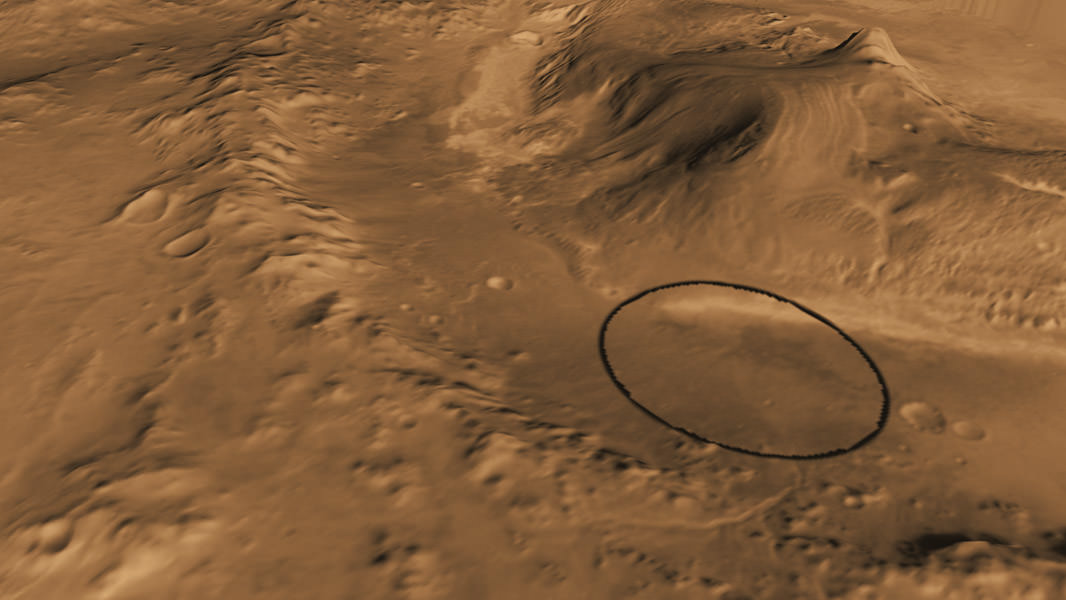Last week scientists, engineers and others who work on the Mars Exploration Rover mission paid tribute to the Spirit rover which explored Mars for six years before succumbing to the harsh Martian winter in 2010. I was away at a conference last week and missed it, but fortunately the event was recorded and you (and I!) can watch it below. Above is a video photo diary of Spirit’s accomplishments on Mars.
Mars Science Lab Rover Will Land in Gale Crater
[/caption]
It’s official: the Mars Science Laboratory rover, Curiosity, will be landing Gale Crater on Mars. Scientists announced the final decision at a special event at the Smithsonian’s National Air and Space Museum Friday morning. Comparing the terrain to an enticing bowl of layered Neopolitan ice cream, the science team announced the rover will land at the foot of a layered mountain inside Gale Crater.
“The science at Gale is going to be amazing and it will be a beautiful place to visit,” said Dawn Sumner, a geologist with the MSL team.
MSL is scheduled to launch in November 2011 from NASA’s Kennedy Space Center in Florida and land in August 2012. Curiosity is twice as long and more than five times as heavy as previous the Mars Exploration rovers Spirit and Opportunity. The rover will study whether the landing region at Gale crater had favorable environmental conditions for supporting microbial life and for preserving clues about whether life ever existed.
News had leaked out a few weeks ago that Gale was the favored site, but scientists today explained what made Gale stand out among the four final candidates, which each offered their own delicious “flavor,” making the decision a difficult one.
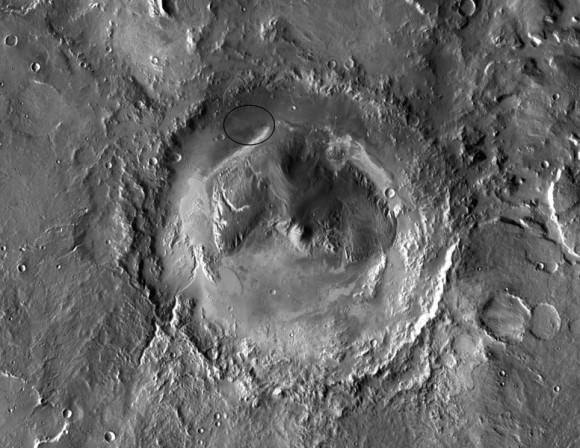
“When it comes down to four landing sites, it comes down to what feels right,” said John Grotzinger, Mars Science Laboratory project scientist. “We as a science team, as a community, we got together and in the end we picked the one that felt best. Why? Here, we’ve got mountain of rocks, taller than Mount Whitney. It looks like Hawaii; it’s not a tall spire, but a broad mound. So we can actually climb up this mountain with the rover. That alone justifies sending the spacecraft there. It turns out, though, the most attractive science sites are at the base of the mountain. We can address the principle goals of the things the Mars community would like answers to.”
NASA’s strategy for Mars has been to “follow the water,” since we know that wherever there is water on Earth, there is life. Scientists are hedging their bets on Mars that wherever liquid water once flowed would be the best places to look for evidence of past habitability.
Gale has that going for it.
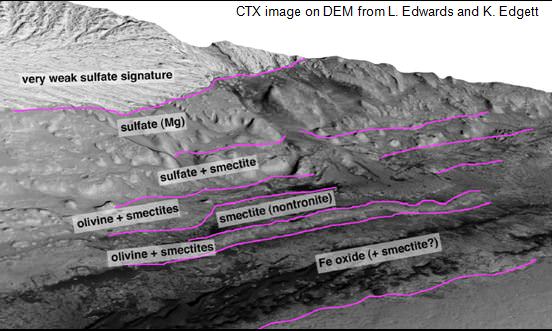
The portion of the crater where Curiosity will land has an alluvial fan likely formed by water-carried sediments. The layers at the base of the mountain contain clays and sulfates, both known to form in water.
“It’s a huge crater sitting in a very low-elevation position on Mars, and we all know that water runs downhill,” Grotzinger said. “In terms of the total vertical profile exposed and the low elevation, Gale offers attractions similar to Mars’ famous Valles Marineris, the largest canyon in the solar system.”
The scientists emphasized that MSL is not a life detection mission, as it can’t look for fossils. But it can detect organic carbon, which can tell the early environmental story of Mars, found in the sediments within rocks.
Gale Crater crater spans 154 kilometers (96 miles) in diameter and is about the combined area of Connecticut and Rhode Island. The mound in the center rises 5 km (3 miles) height and the Layering in the mound suggests it is the surviving remnant of an extensive sequence of deposits.
The crater is named for Australian astronomer Walter F. Gale.
About the size of a Mini-Cooper, Curiosity has 17 cameras and a full color video camera. The mission should offer incredible vistas that will likely wow the public, beginning with the landing, as Curiosity will take a full color, high definition movie as it descends on the “Sky Crane” landing system.
Anyone else ready for this mission to get going?
Hoping Forward At The End Of The Shuttle Era
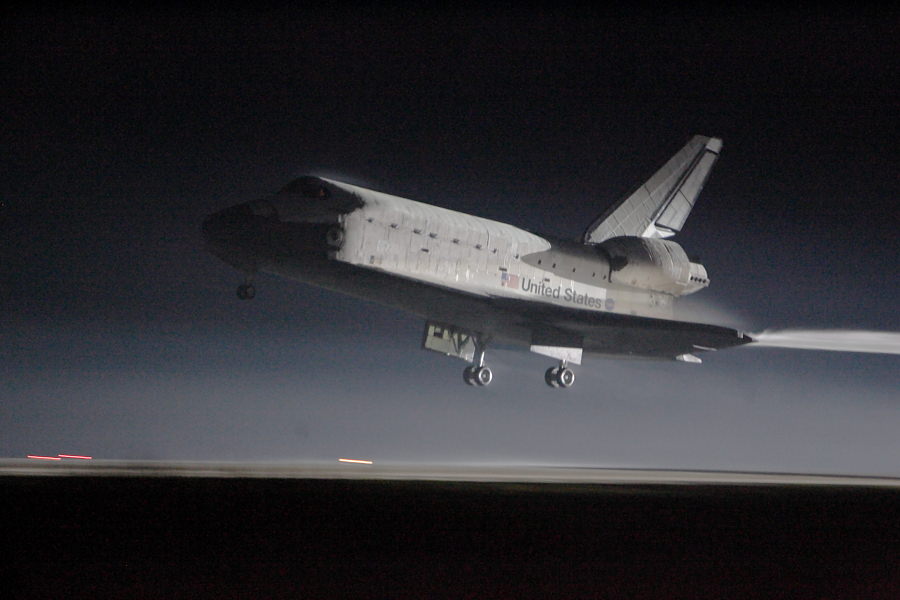
[/caption]
CAPE CANAVERAL Fla. — The last space shuttle mission, STS-135, ended with the landing of the shuttle Atlantis at Kennedy Space Center’s Shuttle Landing Facility at 5:57 a.m. EDT. The air was thick with both humidity and mosquitoes. It was also a day thick with loss. The United States, for the foreseeable future, has lost the ability to launch massive payloads, such as the International Space Station’s Kibo module, into orbit. Lost the capabilities that a manned spacecraft with a robot manipulator system or RMS affords. Lost the ability to chase down wayward satellites, repair them on-orbit or return them to Earth for more intensive work. Lost, at least for the time being, its leadership position in terms of space flight – that position now belongs to Russia with its human-rated Soyuz Spacecraft and unmanned Progress Cargo vessels.
NASA is working to put a positive spin on this new era. The space agency hopes that small, commercial space firms will provide the nation with the capacity to send men and material to orbit as it works to travel beyond low-Earth-orbit (LEO) once again. Only time will tell how successful this direction will be, but there are positive signs that NASA might be on the right path. Following the space program for decades – you learn to hedge your bets. Today’s SpaceX is tomorrow’s Constellation Program.
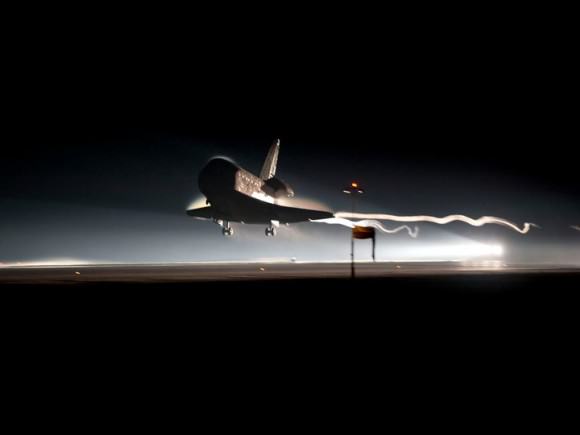
Twin sonic booms shake me out of my revelry as the shuttle announces its return home. Then, a couple minutes later, there is the roar of the approaching orbiter. This sound comes not from shuttle, but rather from the sound of air being forcibly moved out of the shuttle’s path. I had set up two mini-camcorders to capture the landing, but had decided not to take any pictures. I took a moment, for myself, to watch as the shuttle roared past and landed.
There were a number of events held later in the day to commemorate the occasion. It struck me as odd that folks, some of whom would be in the unemployment line the following day, were celebrating. I decided to skip these events – I’ll celebrate when this nation regains the ability to launch astronauts into LEO. NASA Administrator Charlie Bolden worked to reassure everyone that all was well, given that he mistakenly said that the crew of STS-134 returned today – his words were not that reassuring.
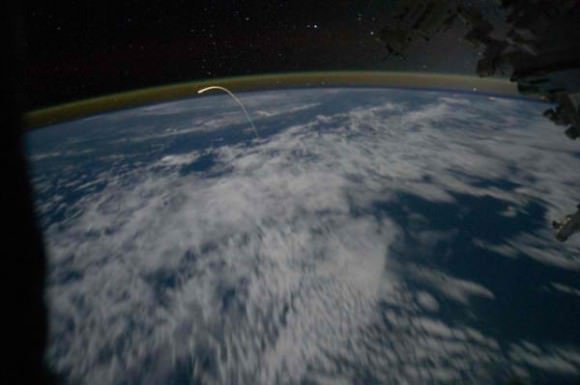
With luck, when the U.S. does return to space again, it will do so on a multitude of different craft, with a multitude of different abilities – and hopefully launch vehicles. If these spacecraft are as different from one another as Boeing’s CST-100 is from Sierra Nevada Corporation’s Dream Chaser – that will be a very good thing – it will mean that many of the capabilities lost today will be replaced, albeit on completely separate vehicles.
That said, we are now entering an undiscovered country, one that NASA has never delved into before. Near the end of Apollo, the shuttle program was approved. With the end of the shuttle program here – NASA has no established human space flight program, it has initiatives, but no umbrella program, no clear path. That said, there are some potentially amazing things on the horizon – but they exist primarily on paper or on PowerPoint. Until they are fleshed out, until they fulfill their promises – today was a day of loss. Like the shuttle program, today was a mixed bag. One filled with hope for what might come, but uncertainty with what the future holds.
These are my personal reflections on the end of the shuttle program. They do not represent the opinions of Universe Today. These thoughts come from following and covering the space program for the last two decades and are not in favor of any one group’s position. I do not work to tell people things I think they want to hear – but what I feel they need to hear. I appreciate and welcome a mature debate with respect given by all sides for everyone’s point of view.
ULA Inks Deal With NASA To Study Man-Rating Atlas V
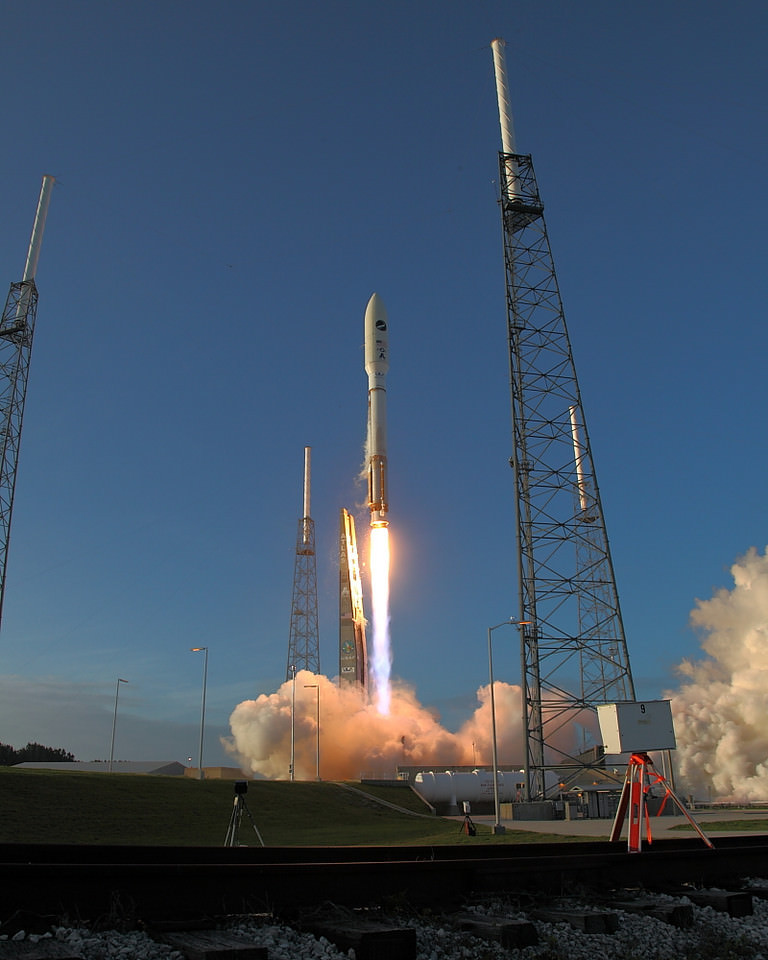
[/caption]
CAPE CANAVERAL Fla. — NASA is looking for a few good rockets – that’s right, plural. While it continues to review the Space Launch System or SLS – it has inked a non-funded agreement with United Launch Alliance (ULA) to utilize the Denver-based firm’s Atlas V rockets to send astronauts into orbit. The announcement was made at Kennedy Space Center in Florida on Monday.
The Space Act Agreement signed by the space agency and ULA will see critical information regarding the flight characteristics of the Atlas V be provided to NASA. ULA will not be alone in providing information however; NASA will give ULA vital data regarding its experience sending humans into orbit as well as guidance as how to adapt the Atlas V for human space flight purposes. NASA will help ULA with both the crew transportation system capabilities as well as the human certification requirements.
This will begin a process where ULA and NASA will work closely with one another to guide the Atlas V toward being man-rated. Before that can happen there are numerous pertinent issues that have to be reviewed first, such as the cost involved and other issues involved with the certification process.
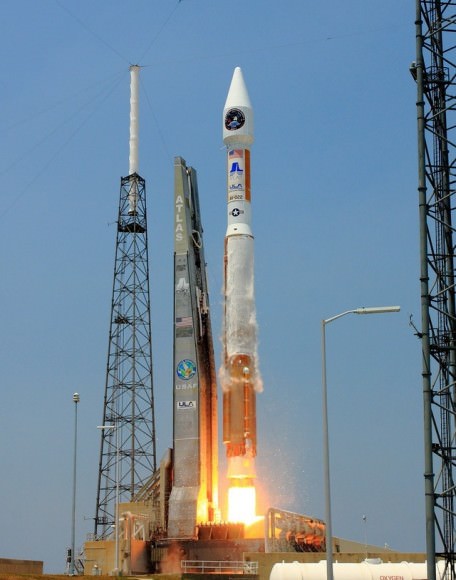
The Atlas V is an expendable launch vehicle that has not only been used by NASA, but the Department of Defense (DoD) as well. The Atlas’ proven track record should allow a large portion of the study to be completed before the end of this year.
NASA’s part of the arrangement includes providing milestone briefings and technical reviews to check and see how the project is progressing as well as identifying risks and attempting to mitigate them.
ULA meanwhile will use its own funds to pay for the Crew Transportation System (CTS). Design maturation, required analyses (including hazard reviews that are unique to human space flight efforts) as well as establishing a man-rated baseline for the Atlas V all will be handled by United Launch Alliance.
The rationale behind why the Atlas V was specifically selected is simple, both Sierra Nevada Corporation and Blue Origin’s proposals under the Commercial Crew Development – 02 (CCDev-02) contract – utilize the Atlas V. Bigelow Aerospace has also looked at the rocket as a launch service provider.
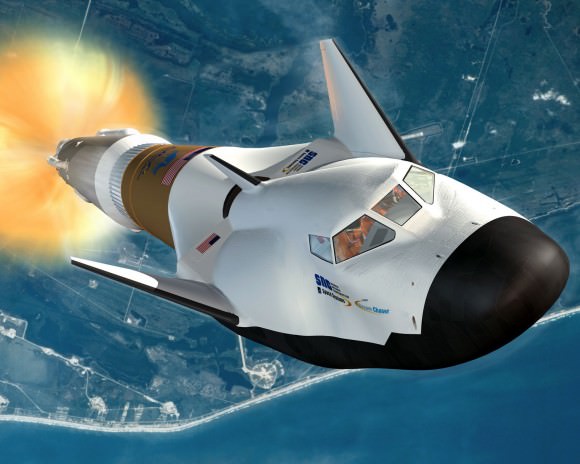
“I am truly excited about the addition of ULA to NASA’s Commercial Crew development Program team,” said NASA Administrator Charles Bolden. “Having ULA on board may speed the development of a commercial crew transportation system for the International Space Station, allowing NASA to concentrate its resources on exploring beyond low
Earth orbit.”
The Atlas V has had 26 consecutive successful flights, making it an easily one of the front runners to potentially send astronauts to orbit.
“We believe this effort will demonstrate to NASA that our systems are fully compliant with NASA requirements for human spaceflight,” said George Sowers, ULA’s vice president of business development. “ULA looks forward to continued work with NASA to develop a U.S. commercial crew space transportation capability providing safe,
reliable, and cost effective access to and return from low Earth orbit and the International Space Station.”
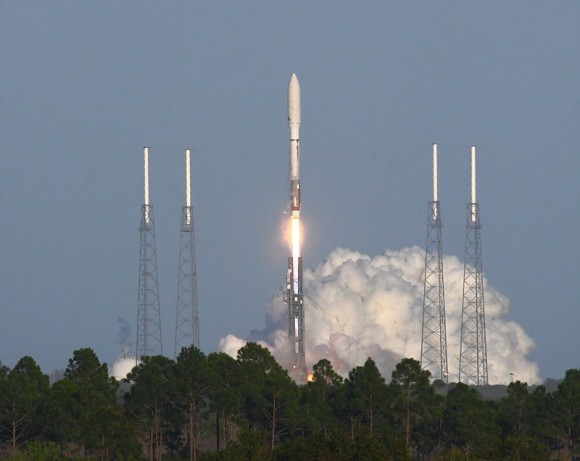
One on One with SpaceX’s Garrett Reisman
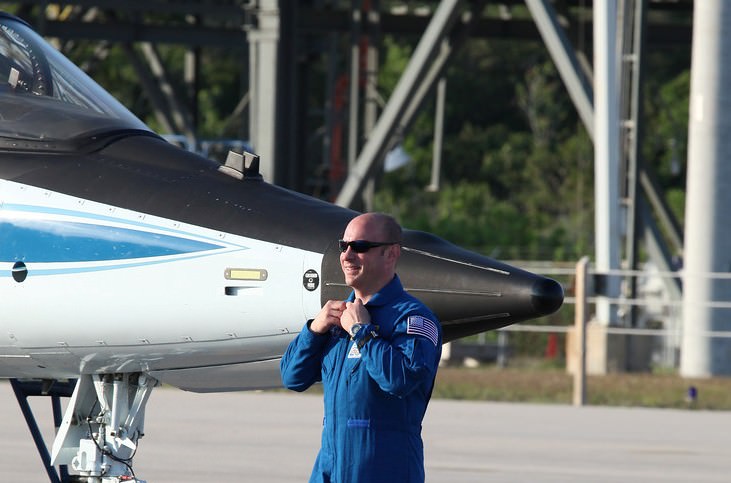
[/caption]
CAPE CANAVERAL Fla. – Garrett Reisman knows a thing or two about what it takes to send astronauts to orbit. He should, he has taken the trip himself – twice. Reisman spent three months on the International Space Station launching with the STS-123 crew, and was a Mission Specialist on STS-132. He has walked in space, operated Canada’s Dextre robot and installed critical flight hardware to the ISS.
He has since left NASA to work for Space Exploration Technologies (SpaceX). Reisman took a moment to chat with Universe Today just before the final launch of the shuttle program, STS-135, on the orbiter Atlantis. Reisman spoke about SpaceX’s contract with NASA under the second phase of the Commercial Crew Development contract or CCDev-02, his new role as Director of SpaceX’s Dragon Rider program and whether there is another trip to space in his future.
Universe Today: Hi Garrett, thanks for taking the time to talk with us today, tell us a little about CCDev-02.
Reisman: “Thanks, it’s good to be here, SpaceX has dubbed CCDev-02 the ‘Dragon Rider’ program, CCDev sounds like someone’s logon name. Dragon Rider is the name of SpaceX’s efforts to send astronauts into orbit on board the Dragon Spacecraft.”
Universe Today: A nod to Anne McCaffrey’s Dragonriders of Pern?
Reisman: “Exactly!” (laughing)
Universe Today: If you had to pick out one of the most interesting elements of what SpaceX is working on for CCDev-02 – what would it be?
Reisman: “I think I would have to say it is the integrated launch abort system. The system that SpaceX is working on will not be the normal tower that is positioned above the spacecraft; instead it will be built into the sides of the Dragon. This system will be reusable and allow the Dragon to land.”
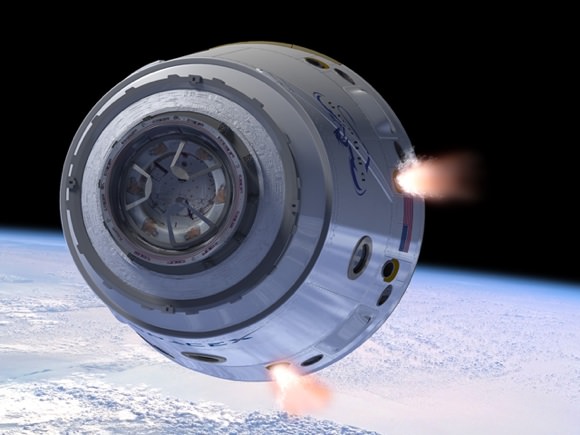
Universe Today: What do you think sets SpaceX apart from other, similar companies?
Reisman: “Some companies will offer you the rocket, others the spacecraft, at SpaceX we got both – it’s one-stop-shopping. We got the rocket, the Falcon 9, which has had two very successful test flights and we have the Dragon Spacecraft which became the first commercial spacecraft to orbit the Earth and splash down safely this past December. With both of these vital elements we have great confidence that we can do what we say we will do as we move forward.”
Universe Today: What made you decide to leave NASA and come to SpaceX?
Reisman: “I left NASA about four months ago and came over to SpaceX because I was very excited about what was going on in the commercial sector, just all this amazing innovation that was being unleashed and I wanted to be a part of that, to contribute to that.”
Universe Today: Final question, as a veteran astronaut are you hoping to ride Dragon to orbit one day?
Reisman: (smiles) While that’s not why I joined SpaceX – I wouldn’t rule it out either…”
SpaceX is looking to launch the next Falcon 9 rocket with Dragon Spacecraft some time this fall from Cape Canaveral Air Force Station’s Launch Complex 40. This demonstration flight will test out the Dragon’s navigation and other operating systems. This year SpaceX is planning to launch two flights under the Commercial Orbital Transportation Services or COTS contract, worth $1.6 billion, that the company has with NASA.
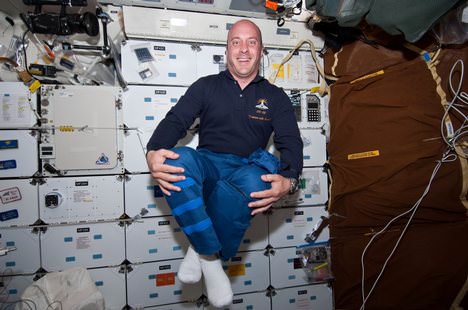
Dawn Exceeds Wildest Expectations as First Ever Spacecraft to Orbit a Protoplanet – Vesta
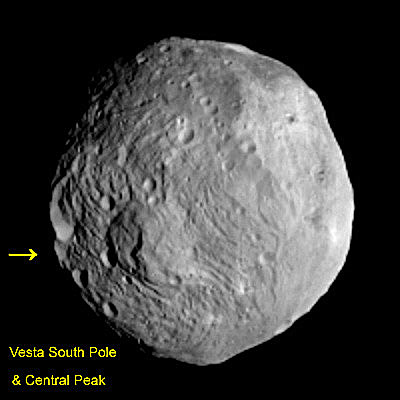
[/caption]
NASA’s super exciting Dawn mission to the Asteroid Belt marked a major milestone in human history by becoming the first ever spacecraft from Planet Earth to achieve orbit around a Protoplanet – Vesta – on July 16. Dawn was launched in September 2007 and was 117 million miles (188 million km) distant from Earth as it was captured by Asteroid Vesta.
Dawn’s achievements thus far have already exceeded the wildest expectations of the science and engineering teams, and the adventure has only just begun ! – so say Dawn’s Science Principal Investigator Prof. Chris Russell, Chief Engineer Dr. Marc Rayman (think Scotty !) and NASA’s Planetary Science Director Jim Green in exclusive new interviews with Universe Today.
As you read these words, Dawn is steadily unveiling new Vesta vistas never before seen by a human being – and in ever higher resolution. And it’s only made possible via the revolutionary and exotic ion propulsion thrusters propelling Dawn through space (think Star Trek !). That’s what NASA, science and space exploration are all about.
“Dawn is in orbit, remains in good health and is continuing to perform all of its functions,” Marc Rayman of the Jet Propulsion Laboratory, Pasadena, Calif., told me. “Indeed, that is how we know it achieved orbit. The confirmation received in a routine communications session that it has continued thrusting is all we needed.”
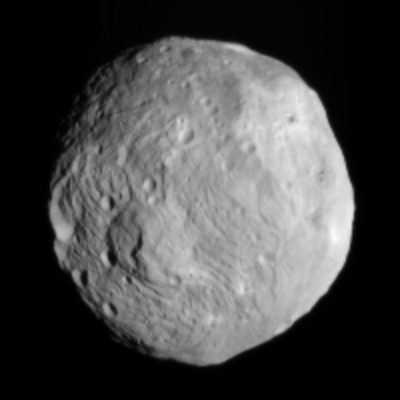
Dawn entered orbit at about 9900 miles (16000 km) altitude after a nearly 4 year journey of 1.73 billion miles.
Over the next few weeks, the spacecrafts primary task is to gradually spiral down to its initial science operations orbit, approximately 1700 miles above the pock marked surface.
Vesta is the second most massive object in the main Asteroid Belt between Mars and Jupiter. Dawn is the first probe to orbit an object in the Asteroid Belt.
I asked Principal Investigator Chris Russell from UCLA for a status update on Dawn and to describe what the team can conclude from the images and data collected thus far.
“The Dawn team is really, really excited right now,” Russell replied.
“This is what we have been planning now for over a decade and to finally be in orbit around our first ‘protoplanet’ is fantastic.”
“The images exceed my wildest dreams. The terrain both shows the stress on the Vestan surface exerted by 4.5 billion years of collisions while preserving evidence [it seems] of what may be internal processes. The result is a complex surface that is very interesting and should be very scientifically productive.”
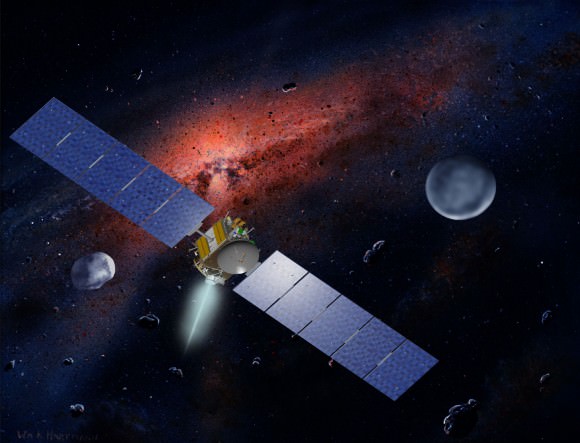
“The team is looking at our low resolution images and trying to make preliminary assessments but the final answers await the higher resolution data that is still to come.”
Russell praised the team and described how well the spacecraft was operating.
“The flight team has been great on this project and deserves a lot of credit for getting us to Vesta EARLY and giving us much more observation time than we had planned,” Russell told me.
“And they have kept the spacecraft healthy and the instruments safe. Now we are ready to work in earnest on our science observations.”
Dawn will remain in orbit at Vesta for one year. Then it will fire its ion thrusters and head for the Dwarf Planet Ceres – the largest object in the Asteroid Belt. Dawn will then achieve another major milestone and become the first spacecraft ever to orbit two celestial objects.
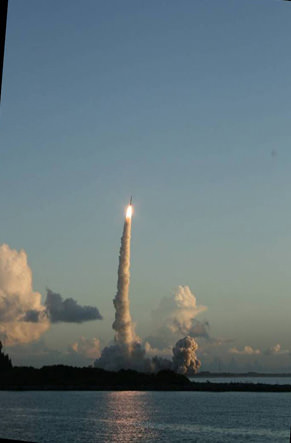
Jim Green, Director of Planetary Science for the Science Mission Directorate (SMD) at NASA HQ in Washington, DC, summed up his feelings about Dawn in this way;
“Getting Dawn into orbit is an amazing achievement,” Green told me.
“Instead of the ‘fire the thrusters full blast’ we just sort of slid into orbit letting gravity grab the spacecraft with a light tug. This gives us great confidence that the big challenge down the road of getting into orbit around Ceres can also be accomplished just as easily.”
Sharper new images from Vesta will be published by NASA in the next day or so.
“We did take a few navigation images in this last sequence and when they get through processing they should be put on the web this week,” Russell informed. “These images are from a similar angle to the last set and with somewhat better resolution and will not reveal much new.”
However, since Dawn is now orbiting Vesta our upcoming view of the protoplanet will be quite different from what we’ve seen in the approach images thus far.
“We will be changing views in the future as the spacecraft begins to climb into its science orbit,” stated Russell.
“This may reveal new features on the surface as well as giving us better resolution. So stay tuned.”
Marc Rayman explained how and why Dawn’s trajectory is changing from equatorial to polar:
“Now that we are close enough to Vesta for its gravity to cause a significant curvature in the trajectory, our view is beginning to change,” said Rayman. “That will be evident in the pictures taken now and in the near future, as the spacecraft arcs north over the dark side and then orbits back to the south over the illuminated side.”
“The sun is over the southern hemisphere right now,” added Russell. “When we leave we are hoping to see it shine in the north.”
Dawn is an international mission with significant participation from Germany and Italy. The navigation images were taken by Dawn’s framing cameras which were built in Germany.
Exploring Vesta is like studying a fossil from the distant past that will immeasurably increase our knowledge of the beginnings of our solar system and how it evolved over time.
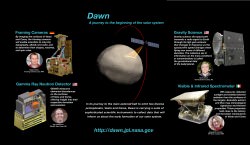
Vesta suffered a cosmic collision at the south pole in the distant past that Dawn can now study at close range.
“For now we are viewing a fantastic asteroid, seeing it up close as we zero in on its southern hemisphere, looking at the huge central peak, and wondering how it got there,” explained Jim Green
“We know Vesta was nearly spherical at one time. Then a collision in its southern hemisphere occurred blowing off an enormous amount of material where a central peak now remains.”
That intriguing peak is now obvious in the latest Dawn images from Vesta. But what does it mean and reveal ?
“We wonder what is that peak? replied Green. “Is it part of the core exposed?
“Was it formed as a result of the impact or did it arise from volcanic action?”
“The Dawn team hopes to answer these questions. I can’t wait!” Green told me.
As a result of that ancient south pole collision, about 5% of all the meteorites found on Earth actually originate from Vesta.
Keep your eyes glued to Dawn as mysterious Vesta’s alluring secrets are unveiled.
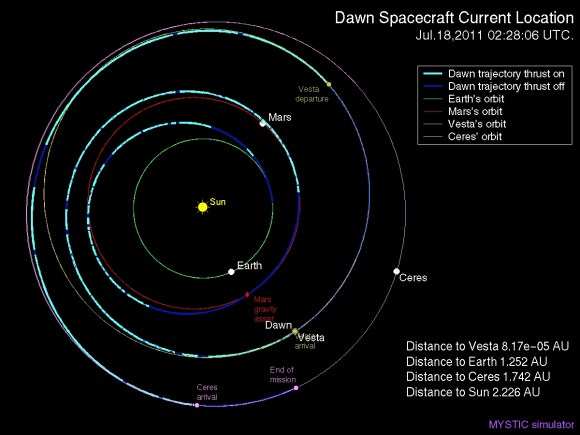
Read my prior features about Dawn
Dawn Closing in on Asteroid Vesta as Views Exceed Hubble
Revolutionary Dawn Closing in on Asteroid Vesta with Opened Eyes
ULA Delta IV Thunders Off Pad With GPS IIF-2 Satellite
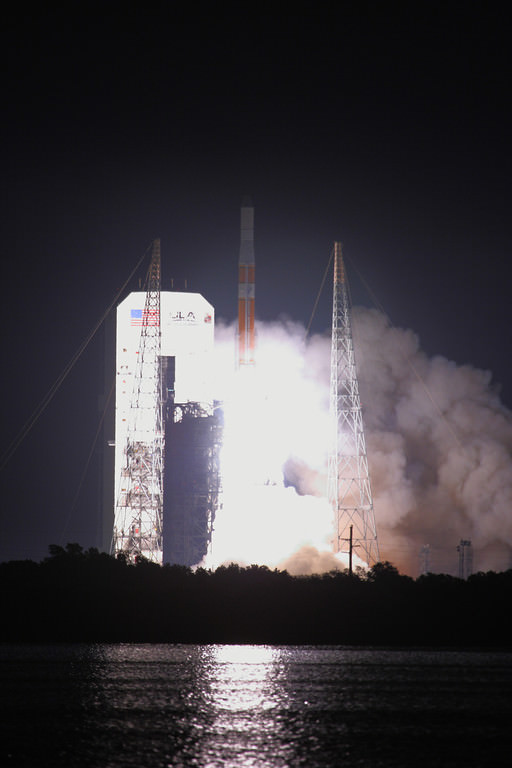
[/caption]
CAPE CANAVERAL, Fla. – The U.S. Air Force launched the GPS IIF-2 satellite into orbit Saturday (July 16) on a mission to enhance the country’s constellation of Global Positioning System satellites. The satellite was launched atop a Delta IV Medium 4, 2 rocket from Cape Canaveral Air Force Station’s Launch Complex 37B at 2:41 a.m. EDT. The Delta IV had been scheduled to launch two days prior but slipped one day due to a technical issue with the satellite and a second day when technicians were prevented from rolling the Mobile Service Tower or MST back because of weather.
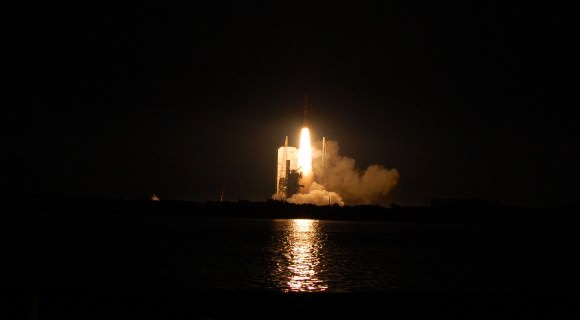
This morning’s launch
The rocket was provided by United Launch Alliance (ULA) and the company oversaw the liftoff. This configuration of the Delta IV Medium has two solid rocket boosters which are provided by Utah’s Alliant Techsystems (ATK). The boosters are required to provide the extra boost required to send the spacecraft into the correct orbit.
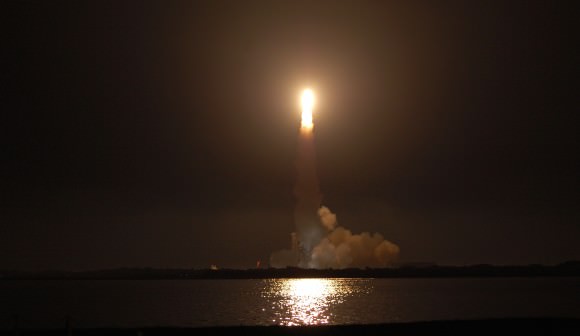
Weather was the biggest concern for the launch, but when the clock reached zero the launch vehicle thundered off of the pad in a spectacle of sound and light. The weather turned out to be a non-issue with mostly clear moonlit skies and almost no breeze. Lightning could still be seen lighting up the Florida sky off in the distance – but the summer light show only served as a backdrop for the launch.
“This is an exciting time for ULA, we are happy to have launched our 52nd mission,” said United Launch Alliance Spokesman Chris Chavez. “We’re happy to support the U.S. Air Force along with our customer and partner Boeing – it was a great launch and a great morning.”
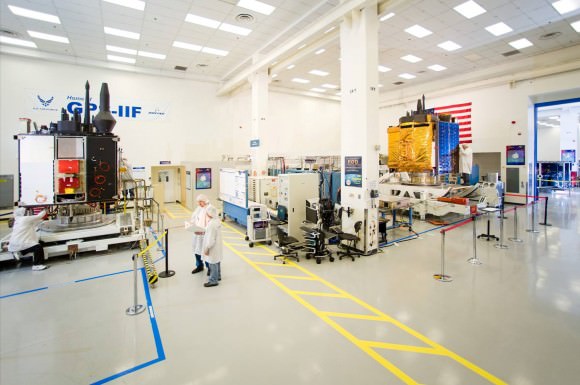
The satellite
Boeing is the prime contractor that provided the U.S. Air Force with the GPS satellite. The GPS IIF system is expected to provide next-generation performance to the GPS constellation of satellites. These abilities are considered to be vital to U.S. national security as well as maintaining the GPS constellation’s availability for civil, commercial and military requirements. The IIF is expected to provide enhanced capability and better performance.
The first GPS IIF satellite was launched in 2010. It is hoped that the pulse-line production method that is employed by Boeing will ensure that the IIF fleet is placed on orbit on schedule. This production method is very similar to how airplanes are developed. The process is named because satellites are moved from one work station to the next in a steady rhythm – similar to a pulse.
The GPS IIF-2 satellite will be utilized for both for civilian and military purposes. A new civilian L5 signal will assist with search and rescue missions, while the military will benefit from the satellite’s resistance to jamming. The satellite also has a reprogrammable processor that can receive uploads on-orbit. GPS IIF-2 has a design life of 12 years and it is hoped that it will provide long-term service will keeping operating costs low.
“The enhancements that the GPS IIF-2 satellite has should strengthen the constellation for many years to come,” said Boeing Spokesperson Angie Yoshimura.
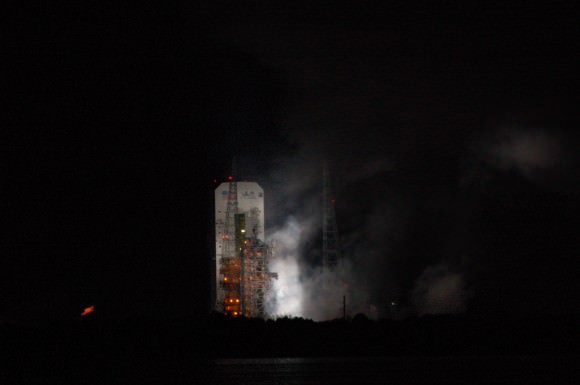
Measuring Mercury’s Craters
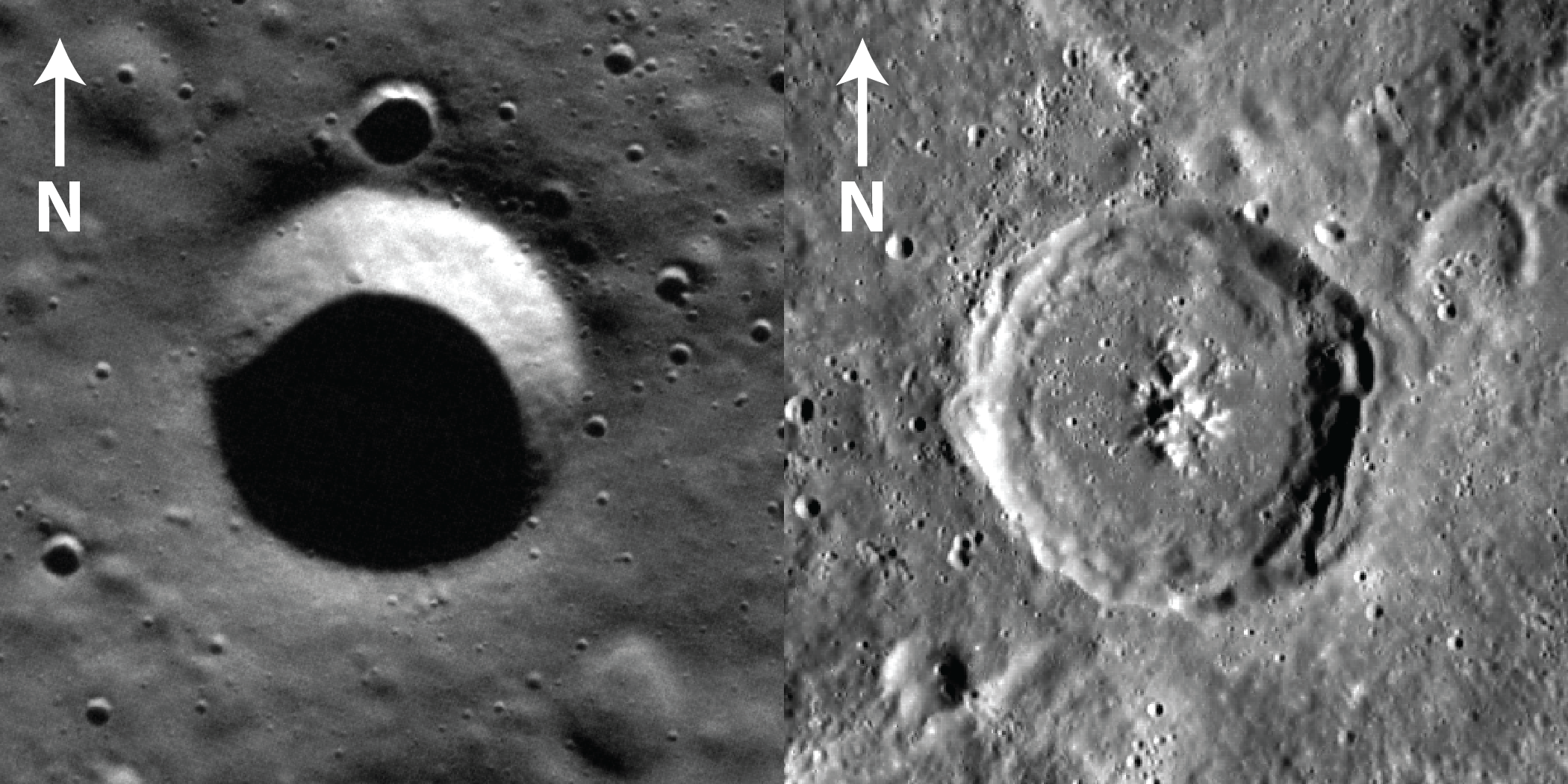
[/caption]
Getting to know a planet well is getting to know its surface features. Through measuring impact craters, planetary scientists are able to disclose information such as the origin and evolution of Mercury’s surface. We know it’s a matter of numbers, but just exactly how is it done when you can’t physically be there?
Size, shape and structure of craters is the common bond that most solar system bodies share. By understanding the physics of how they were made, researchers are able to draw conclusions through modeling. Their laboratory impact experiments and numerical simulations make judging crater qualities doable on a planetary scale. To further refine their results, it is then compared against known data for new, as well as eroded, craters. This information then gives us a clearer idea of surface properties, such as mineral deposits, soil composition, ice deposits, proportions and more. Checking out shapes and sizes on Mercury with observations obtained by the MESSENGER spacecraft are just the beginning.
Why is a Mercury crater investigation so important? Maybe because its surface gravitational acceleration (3.7 m/s2) is nearly identical to that at Mars. In this case, gravity plays an important role as the “transition diameter” is affected. According to the study, “Simple craters tend to be bowl shaped, whereas complex craters have terraced walls and can contain a central peak. If gravity were the dominant factor controlling the transition diameter, one would expect that this diameter would be similar on Mercury and Mars.” These transition diameters observed on Mercury are important because they give us clues to the Martian crust. Their differences could mean a weaker surface due to near-surface water ice.
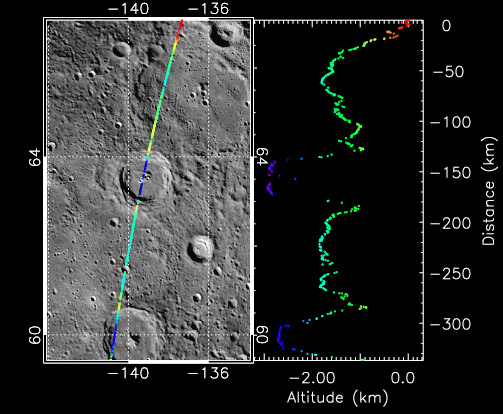
The Mercury Laser Altimeter (MLA) and the Mercury Dual Imaging System (MDIS) are hard at work providing the photo data needed to study cratering. We’re now able to get an inside look at central peaks, walls, floors and slopes. In addition, we’re getting a concise measurement of diameters. As with the Moon, researchers can make assessments as to depth by measuring the shadows. While MLA cannot always be used for these types of measurements, these fresh insights are furthering our understanding of crater properties – both on Mercury and across all holey bodies in our solar system.
Original News Source: Messenger News.
Looming Larger: Dawn Approaches Vesta, Enters Orbit July 15-16
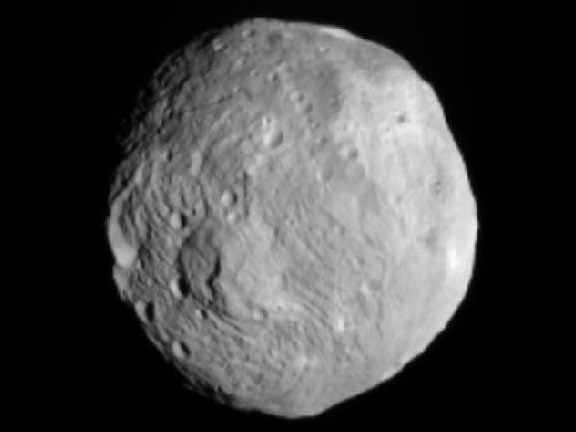
[/caption]
As we anticipate the Dawn spacecraft going into orbit of Vesta within the next 36 hours, here’s the latest image taken as the spacecraft approaches Vesta, taken on July 9 from a distance of about 41,000 kilometers (26,000 miles). Surface details are coming into focus a little more than from the previous image that was released. The Dawn mission is exciting, as it will be the first spacecraft to enter orbit around a main-belt asteroid, and as we’ve said before, it will be intriguing for scientists to study this lumpy little world in detail and perhaps figuring out what Vesta really is.
Below is an “enhanced” look at this view of Vesta by Stu Atkinson.
Some astronomers classify Vesta as an asteroid, some a protoplanet, and some are on the fence. It’s not really considered a dwarf planet, but the classification could be re-evaluated when Dawn gets in orbit of Vesta and studies it in detail.
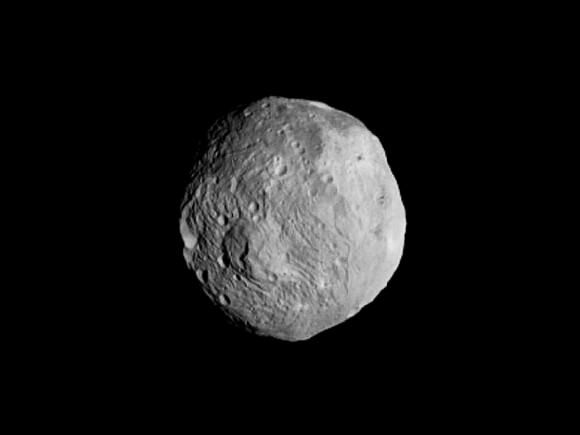
Stu sent us this image with the caveat that he created it for his own amusement/entertainment, and that it’s not a scientifically enhanced image — i.e., it’s not to be 100% relied upon for feature identification, etc. But it’s a little clearer and sharper than the original from NASA/JPL. Thanks Stu!
Engineers expect the spacecraft to be captured into orbit at approximately 10 p.m. PDT Friday, July 15 (1 a.m. EDT Saturday, July 16). They expect to hear from the spacecraft and confirm that it performed as planned during a scheduled communications pass that starts at approximately 11:30 p.m. PDT on Saturday, July 16 (2:30 a.m. EDT Sunday, July 17). When Vesta captures Dawn into its orbit, engineers estimate there will be approximately 9,900 miles (16,000 kilometers) between the spacecraft and Vesta. At that point, the two will be approximately 117 million miles (188 million kilometers) from Earth.
“It has taken nearly four years to get to this point,” said Robert Mase, Dawn project manager at NASA’s Jet Propulsion Laboratory in Pasadena, Calif. “Our latest tests and check-outs show that Dawn is right on target and performing normally.”
Engineers have been subtly shaping Dawn’s trajectory for years to match Vesta’s orbit around the sun with its ion engine. Unlike other missions, where dramatic propulsive burns put spacecraft into orbit around a planet, Dawn will ease up next to Vesta. Then the asteroid’s gravity will capture the spacecraft into orbit. However, until Dawn nears Vesta and makes accurate measurements, the asteroid’s mass and gravity will only be estimates. So the Dawn team will need a few days to refine the exact moment of orbit capture.
Launched in September 2007, Dawn will depart for its second destination, the dwarf planet Ceres, in July 2012. The spacecraft will be the first to orbit two bodies in our solar system.
Stay tuned for more details and updates on the Dawn mission.
Source: JPL
Return of the Capsule
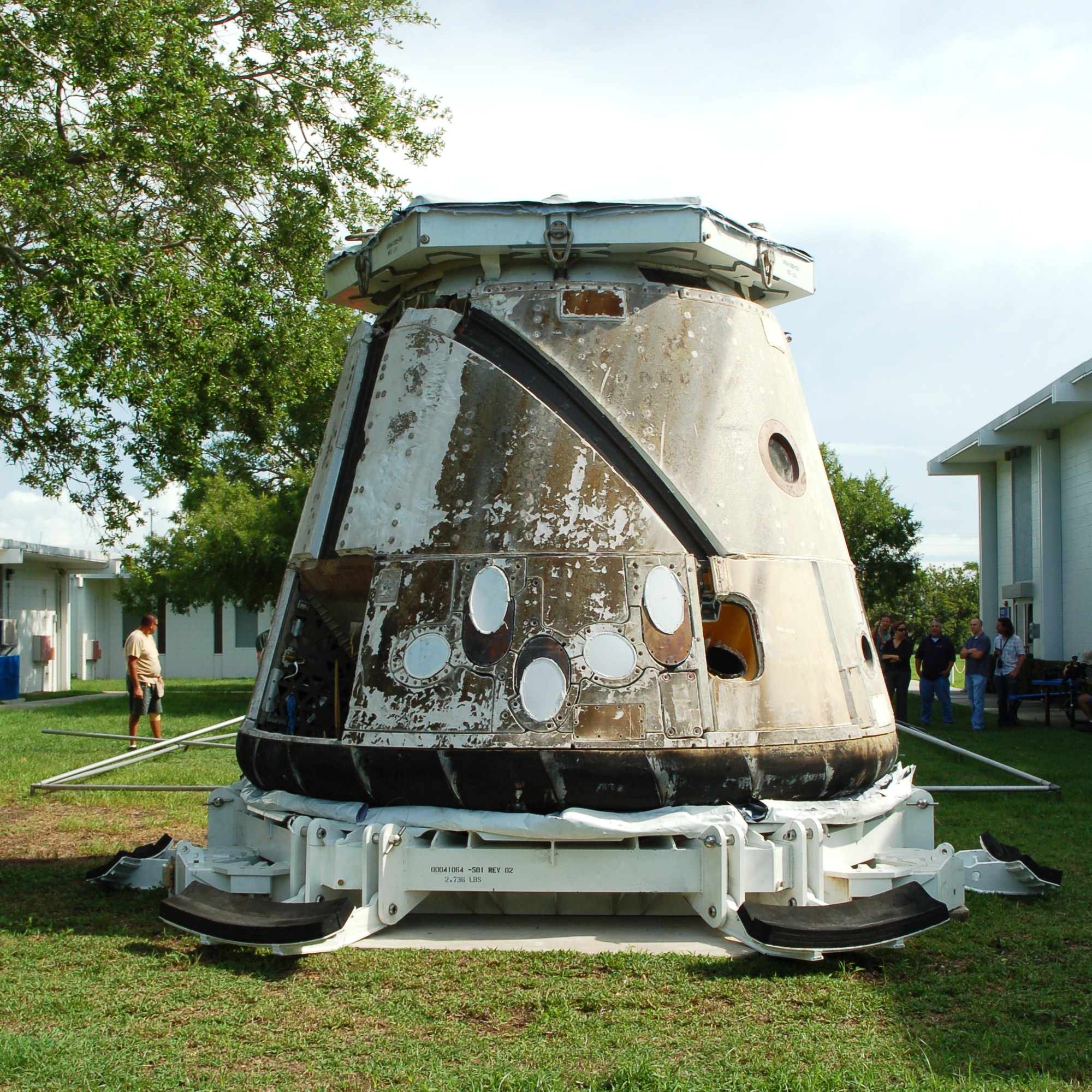
[/caption]
CAPE CANAVERAL Fla. – As Florida’s Space Coast braces for the end of the shuttle program this month, signs of life after shuttle are starting to emerge. Space Exploration Technologies (SpaceX) returned the Dragon Spacecraft that launched this past December to Cape Canaveral Air Force Station. The Dragon however, was not alone. Two more capsules, one a test article, the other a mock-up were on display at Kennedy Space Center’s press site, signaling the coming way of the future for human spaceflight.
The Dragon Spacecraft was on display outside of Cape Canaveral Air Force Station. Placed between SpaceX’s Launch Control Center (LCC) and the U.S. Air Force Space and Missile History Center, the Dragon’s scorched hull was displayed to remind Space Coast residents that the space program was not retiring along with the shuttles.
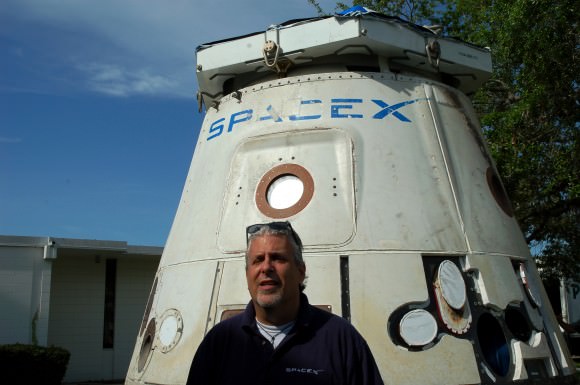
“A lot of people are sad that the shuttle program is ending, it has been such an integral part of the area for three decades that they have a right to feel this way,” said SpaceX’s Vice President of Communications, Bobby Block. “Just because the shuttles are retiring however, does not mean that the entire space program is ending – it’s not over – it is the ending of one program, but it also is the start of another.”
That sentiment was shared by Lockheed Martin who brought their Orion Multi-Purpose Crew Vehicle to sit near the iconic Countdown Clock, a mere 3.5 miles away from shuttle Atlantis out at Launch Complex 39A. At first glance the fact that the capsule was still chained to the back of a trailer appeared to suggest that its appearance was rushed but in fact it highlighted a campaign by Lockheed Martin to let the public view Orion.
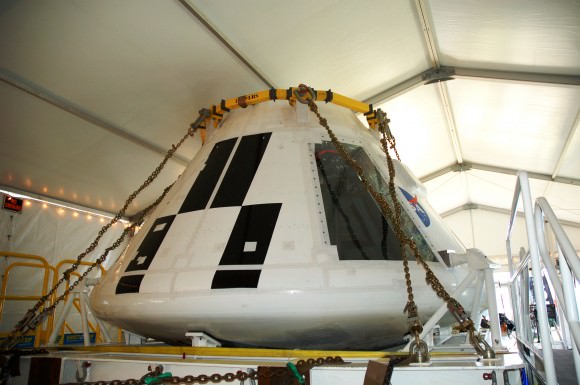
“We were taking the Orion to Kennedy Space Center so we took the opportunity to stop along the way,” said Lockheed Martin’s Communications Manager for the Orion Project Linda Singleton. “This way we could tell the public about the Orion Program, let them see the spacecraft first hand. We stopped at Tucson, Austin and Tallahassee and met with 20,000 people in person across the country and talked to them about Orion.”
Not to be outdone, the Boeing Company had a replica of its CST-100 Space Taxi – split down the middle allowing guests to get an up close and in-depth look at the capsule-concept that it is submitting, in collaboration with Bigelow Aerospace, as their entry for NASA’s Commercial Crew Development (CCDev) program. If chosen, it would be used to ferry astronauts to the International Space Station. Boeing also had a structural article on display nearby.
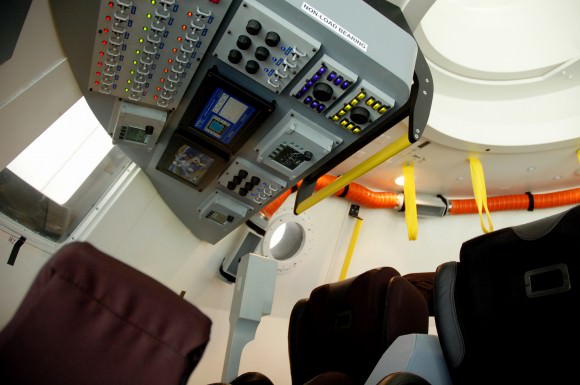
“The reason we selected a capsule is that it is a simple system, we’ve been flown since John Glenn did his first flight on Mercury,” said Boeing’s Vice-President and Program Manager of Commercial Crew Programs John Elbon. “The purpose of this transportation system is just to take passengers to the space station, so our design is focused on that mission.”
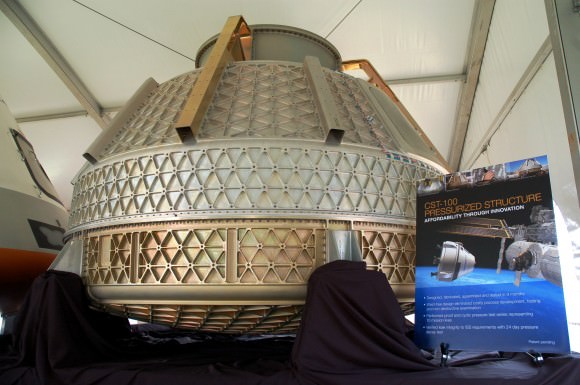
The numerous capsules on display as well as other “Space-Taxi” systems such as the one proposed by Sierra Nevada highlight efforts to shrink the human space flight gap that will start on July 21, when Atlantis conducts its final wheel stop. With the number of spacecraft that have flown, are being tested or just now emerging off the drawing boards it is possible that the U.S. might have a variety of craft for a wide range of missions. For now however, NASA will have to rely on Russia’s Soyuz Spacecraft.

